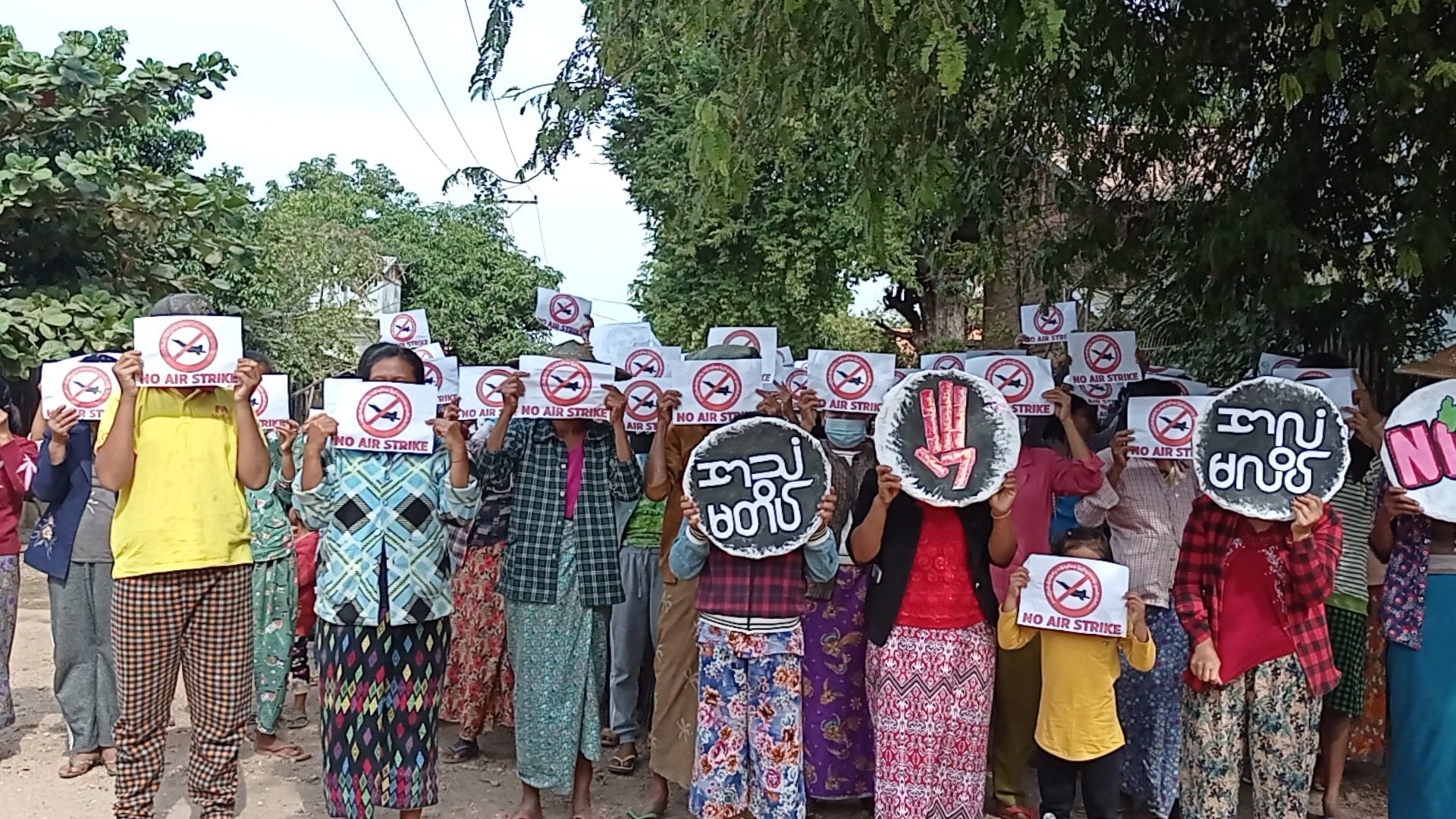by Michael Sladnick
The most dedicated young people from the cities have joined the resistance in Burma (Myanmar), primarily from the urban working class. But in the rural “heartland” of Upper Burma the People’s Defense Forces (PDF) is a much broader phenomenon–hundreds of thousands have rallied to the red banner, more all the time. Many times more are taking on a supporting role (there is still a terrible lack of real guns).
A WORKER, NOT PEASANT, UPRISING

Demonstration in Yinmabin Township, Myanmar, on Jan. 18, 2022, one of many that are defying the Tatmadaw. Photo: Michael Sladnick.
This is not a peasant uprising like those Asia saw in the mid-20th century. The movement in the countryside erupted in response to the massacre of the factory proletariat, most of whom are women from villages, who stood at the head of the early protests. The movement is organized around a general strike, with an expectation that the post-coup government will outlaw counterrevolutionary capitalists and immediately reinstate workers in their posts, compensate those who sacrificed for the revolution, and develop the impoverished areas at the center of the uprising where villages are now being burned down daily.
Banners at protests now have slogans like “Stand with Oppressed Workers to Tear Out Fascism by Its Roots,” and it is becoming more common to see hammers and sickles or anarchist ‘A’s than Aung San Suu Kyi’s portrait or the National League for Democracy flag (the latter, for Aung San Suu Kyi’s party, are still seen mostly when there is a protest in a village that hasn’t demonstrated since last year). On Women’s Day this year, a Burmese translation of Alexandra Kollontai was circling. The centrality of the rights of the oppressed is the constant subject of discussion. The movement is self-organized into thousands of groups, which, despite being totally autonomous, are highly disciplined and capable of complex active cooperation with other groups.
The last wave of global capitalist development occurred on the backs of the dispossessed peasantry all over the world, above all through the super-exploitation of rural migrant workers in China. Now we see the revolutionary implications of the world that has created. Through the global economy, the oppressive reach of the modern state, and above all internet and social media, the rural poor and other previously marginalized populations have been drawn into the ranks of the proletariat–culturally, politically, and in their capacity for self-organization. This is what the Tatmadaw wasn’t counting on, and why it has thus far and will continue to fail to crush the revolution.
